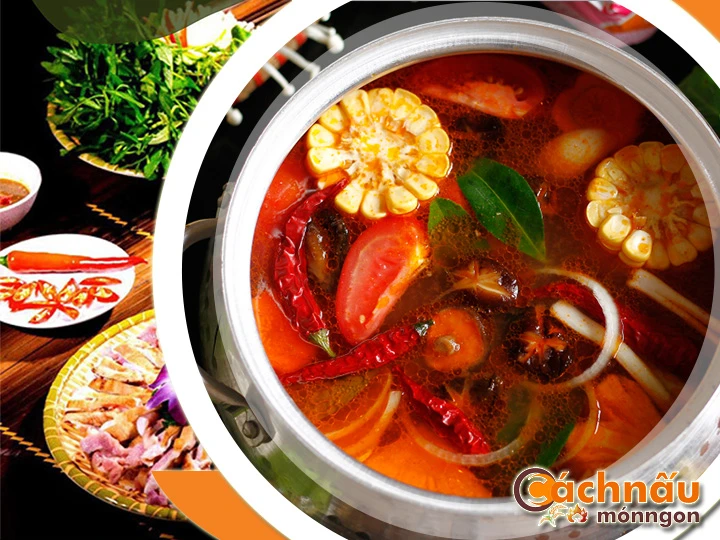Learn the Delicious Rabbit Hot Pot Techniques for Food Lovers - Lẩu thỏ
Learn the Delicious Rabbit Hot Pot Techniques for Food Lovers - Lẩu thỏ
Blog Article
Hot pot rabbit, a scrumptious and ethnic specialty, has been adored across different food cultures for centuries.

This comprehensive guide explores the totality you need to understand about rabbit hot pot, from its old-world roots to present-day styles, nutritional benefits, and detailed guide for creating the ideal dish at home. Whether you are a professional cook or a inquisitive newcomer, this guide will support and train you to perfect the skill of rabbit hot pot.
LEARNING ABOUT THE STORY & HERITAGE REGARDING {BRAISED RABBIT DISH|HEARTY RABBIT MEAL|RABBIT HOT POT|RABBIT STEW|BUNNY CASSEROLE|RABBIT CUISINE|STEWED RABBIT
Rabbit hot pot is a unique and historical dish with deep cultural roots in multiple countries. Its appeal stems not only from its delicious flavor but also from its heritage and meaning.
Rabbit hot pot stands as a one-of-a-kind and historical dish with profound cultural connections in different parts of the world. Its demand stems not only from its flavorful flavor but also from its historical and cultural significance.
- Historical Beginnings: Rabbit casserole originated in farming communities where rabbits were a common, healthy food source. In China’s past, it was a household staple, particularly during holidays.
- Widely Popularized: In Western countries like Italy, rabbit was often included in broths, adapting into modern versions of rabbit hot pot as the dish found fans worldwide.
2. Braised Bunny Dish in Eastern Culinary Practices.
- Throughout China: Known as Sichuan's rabbit hot pot delicacy, rabbit hot pot is widely known in Sichuan-style cooking, renowned for its bold flavors and typically served at intimate family events.
- Korea and Japan: While not widely found, rabbit hot pot is rarely created as a medicinal dish in South Korea, or borrowing ideas from traditional nabemono dishes in Japan, incorporating local greens and flavoring ingredients.
- In Vietnam: Although rabbit hot pot is uncommon in everyday meals, it is well-known during noteworthy gatherings or in remote locations where rabbit meat is accessible. It is often flavored by distinctive spices such as lemongrass, aromatic ginger, and fiery chili, paired with fresh vegetables like morning glory, green mustard, or aquatic greens. This dish is enjoyed for its unique flavor and health benefits, frequently enjoyed during gatherings with friends or family.
Ở Việt Nam, tuy không đích thực là món ăn thường nhật liên tục mỗi ngày, nhưng được biết đến trong những dịp đặc biệt hoặc ở các vùng xa xôi, nơi thịt thỏ dễ dàng tìm thấy. Thường được chế biến với các loại gia vị như sả, vị cay từ gừng, và ớt cay, kết hợp với những loại rau như cải bẹ xanh. Món ăn này được lòng nhiều người nhờ mùi vị khác lạ và giá trị dinh dưỡng cao, thường được thưởng thức tại các bữa tiệc gia đình.
3. Hearty Rabbit Meal integral to Food Traditions in Europe.
- Throughout France: Widely known as a robust stew with a red wine base, aromatic herbs including rosemary, and classic root vegetables. Rabbit hot pot is a culinary staple for holiday meals.
- Across Italy: The dish “Cacciatore”, featuring rabbit simmered with wine and tomatoes, is a culinary root of rabbit hot pot recipes.
RECIPES AND TECHNIQUES FOR COOKING RABBIT HOT POT
Rabbit hot pot is a versatile dish that merges fresh ingredients, flavorful broths, and unique cooking techniques to create a rich and satisfying meal. Below are essential tips into the primary methods and techniques to master rabbit hot pot.
The Fundamental Recipe for Rabbit Hot Pot
* Ingredients:
- 1 whole rabbit (chopped into parts)
- 4 cups of broth (bone broth)
- Vegetables (bok choy)
- Spices and herbs (rosemary)
- Seasonings (soy sauce)
- Optional: side dishes for serving
* Method:
- Getting the Rabbit Ready: Wash and cut the rabbit into pieces. Marinate with a pinch of salt, pepper, and a splash of soy sauce lẩu thỏ đúng điệu for half an hour to enrich the flavor.
- Prepare the Broth: Heat a pan with a touch of oil. Cook garlic and sliced ginger until golden. Add your choice of broth and bring it to a boil.
- Cook the Meat: Add the rabbit pieces into the pot and let them gently boil on gentle heat for 30-40 minutes until tender.
- Incorporate Vegetables: Add your selected vegetables and cook until they are tender but still vibrant.
- Serve: Transfer the hot pot to a serving dish. Serve with dipping sauces and add-ons such as rice or noodles.
Techniques to Perfect Rabbit Hot Pot
- Seasoning:
. Marinate the rabbit with a combination of salt, pepper, and spices to intensify its base flavor.
. For more depth, use soy sauce or a mix of herbs such as rosemary and thyme.
- Adding Ingredients Strategically:
. Start by cooking the rabbit in the broth to extract its essence.
. Introduce vegetables step by step based on their required time.
- Optimal Cooking Duration:
. Avoid letting it dry out the rabbit, as it can turn chewy.
. Test for doneness by checking if the meat easily separates from the bone.
- Flavor Enhancements:
. Fine-tune the broth by adding more spices as needed.
. Experiment with different flavor profiles, such as herbal-infused variations.
Tips for Success
- Fresh Ingredients: Always choose locally sourced rabbit and seasonal vegetables for the top flavor.
- Achieve Harmony: Be aware of the sweetness in the broth. Try and refine frequently during cooking.
- Dipping Sauces: Offer a range of sauces like garlic-chili oil or soy-based dips to elevate the dining experience.
- Visual Appeal: Use a tabletop cooker or serve the hot pot as the centerpiece to encourage communal dining.
By perfecting these cooking techniques, you can make a rabbit hot pot that’s both flavorful and visually appealing, turning it into a highlight for any meal or event.
Report this page
